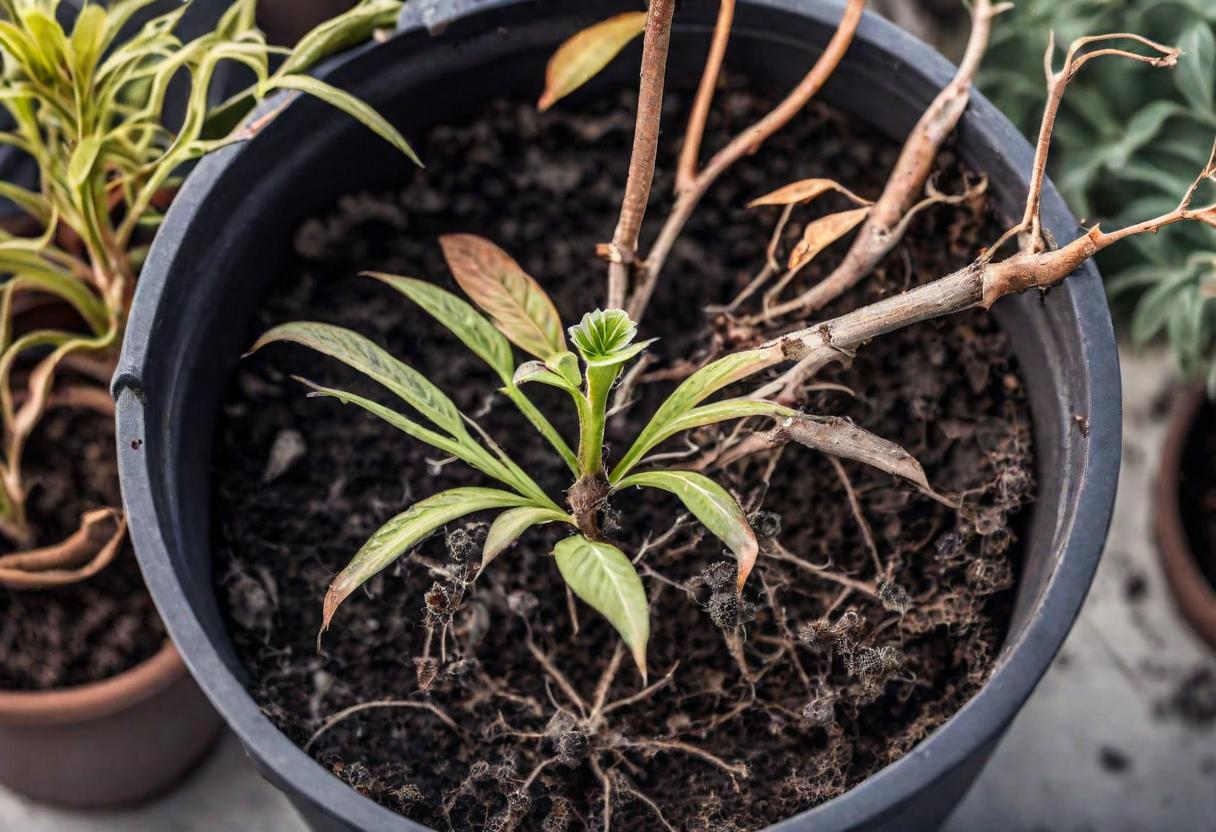My Container Plants Are Not Thriving
Are your container plants showing signs of distress? It is crucial to pinpoint the root cause. Many gardeners, especially beginners and working professionals, often find themselves frustrated when their plants fail to thrive, showing poor growth and ultimately dying prematurely.
Also, many plant enthusiasts encounter this problem, often wondering what went wrong. Let’s explore effective ways to address this issue and ensure your plants flourish.
Common Causes of Container Plants Failing to Thrive
1. Lack of Water
Insufficient hydration can lead to wilting and eventual death.
- It is essential to water container plants regularly, especially during hot and dry periods.
2. Overwatering
Conversely, overwatering can suffocate the roots, causing root rot and depriving the plant of oxygen.
- Finding the right balance is crucial for plant health.
3. Not Using Good Soil Mixture
The soil in containers can deteriorate over time, leading to nutrient deficiencies and drainage issues.
- Choosing a high-quality potting mix is vital for plant growth.
|
Must read How to prepare perfect Soil Mix for plants |
4. Lack of Sunlight
Plants need adequate sunlight to photosynthesize and thrive.
- Insufficient light can weaken plants, making them more susceptible to diseases and pests.
5. Pests and Diseases
Insects, fungi, and bacterial infections can wreak havoc on container plants, causing damage to leaves, stems, and roots.
- Regular monitoring and prompt intervention are necessary to prevent infestations.
6. Not giving adequate fertilizers to plants
Plants require essential nutrients for healthy growth, and without proper fertilization, they may struggle to thrive.
- Consider adding a balanced fertilizer to replenish the nutrients in the soil and support your plants’ growth and vitality.
|
Must read How to give fertilizers to plants |
7. Signs of Plant Stress
Identifying the early signs of plant stress can help prevent further damage.
- Look out for yellowing leaves, drooping stems, and stunted growth, indicating that the plant is struggling to survive.
Ways to Avoid Container Plant Loss
To ensure the health and longevity of your container plants, follow these essential guidelines:
1. Proper Watering Techniques
Water plants thoroughly, allowing excess water to drain freely from the bottom of the container.
- Avoid overwatering by checking the soil moisture level before watering.
2. Choosing the Right Soil Mix
Use a well-draining potting mix tailored to the specific needs of your plants.
- Consider adding sand, cocopeat to improve drainage and aeration.
3. Providing Adequate Sunlight
Place container plants in a location where they can receive the appropriate amount of sunlight for their species.
- Monitor changes in sunlight throughout the day and adjust placement accordingly.
4. Regular Pest and Disease Management
Inspect plants regularly for signs of pests or diseases, such as chewed leaves or unusual spots.
- Treat infestations promptly using organic or chemical control methods.
Tips for Reviving Dying Container Plants
If you notice your container plants showing signs of distress, take immediate action to revive them:
1. Assess the Plant’s Condition
Examine the roots, stems, and leaves for any signs of damage or disease.
- Trim away dead or infected parts to promote new growth.
2. Adjust Watering and Sunlight
Determine if the plant is receiving adequate water and sunlight.
- Adjust watering frequency and placement to meet the plant’s needs.
3. Pruning Dead or Damaged Parts
Remove dead or damaged leaves, stems, and flowers to encourage healthy growth.
- Use clean, sharp pruning tools to prevent further injury to the plant.
4. Fertilizing if Necessary
If the plant is lacking essential nutrients, consider fertilizing with a balanced fertilizer to promote growth and recovery.
Conclusion
In conclusion, understanding the common reasons for container plant spoil and implementing effective care practices can help you maintain healthy and thriving plants.
- By providing adequate water, sunlight, and nutrients, and promptly addressing any issues that arise, you can enjoy the beauty of container gardening for years to come.
FAQs on How to Save Container Plants
1. How often should I water my container plants?
Ans: The frequency of watering depends on factors such as plant species, container size, and environmental conditions.
- Generally, it is best to water when the top inch of soil feels dry to the touch.
2. What should I do if my container plants are infested with pests?
Ans: Remove affected leaves or stems, and treat the plants with an appropriate insecticide or pesticide.
- Consider using natural remedies or beneficial insects to control pests.
3. Can I use regular garden soil for container plants?
Ans: Garden soil is not recommended for container plants as it can become compacted and hinder drainage.
- Opt for a well-draining potting mix formulated for container gardening.
4. How much sunlight do container plants need?
Ans: Most container plants require at least six hours of sunlight per day to thrive. However, the specific light requirements may vary depending on the plant species.
Thanks
Happy gardening!
